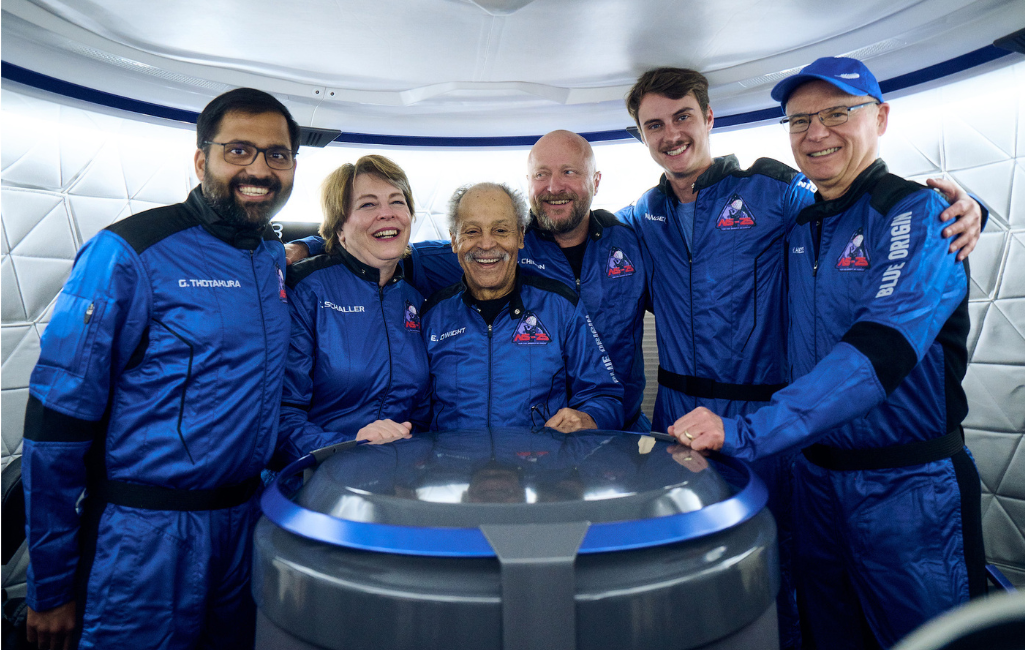By Natalie Rodgers
In 1961, Ed Dwight had already made a name for himself in the U.S. Air Force. With a little under 10 years under his belt, he had already earned the rank of captain, served as a test pilot at numerous bases and earned his degree in aeronautical engineering. Showing expertise in his craft, Dwight became the obvious choice for the Aerospace Research Pilot School, a prestigious Air Force program that was known for producing NASA astronauts.
President John F. Kennedy ultimately chose Dwight for the program because of his tremendous skill set and to diversify NASA’s astronaut program. However, after proceeding to Phase II of the program, Dwight was rejected from continuing based on racial discrimination. This ultimately ended his hopes of becoming the first Black astronaut and prompted his resignation from the Air Force in 1966.
Now, 90-year-old Dwight’s dream of going to space is now a reality.
Blue Origin announced on May 19, 2024 that Dwight joined the six-person crew of their NS-25 mission. His inclusion in the flight was sponsored by Space for Humanity and the Jaison and Jamie Robinson Foundation, which are dedicated to democratizing access to space and fulfilling the dreams of diverse leaders. While primarily based on tourism, the launch was also working with Club for the Future, a program dedicated to building interest in the STEAM fields for children.
His excitement on the matter can be inferred from a teary statement he shared with Good Morning America last year:
“Had all things been equal, I would have made it to the moon; I had the capability, and I was not given that opportunity.”
Despite not being chosen by NASA in the 1960s, Dwight has used his experiences to continue promoting diversity in the STEAM field and to encourage future generations to do what no one has done before. He’s written a book, Soaring On The Wings Of A Dream: The Untold Story of America’s First Black Astronaut Candidate, was included in The Space Race documentary with astronauts Leland Melvin and Victor Glover, became an honorary member of the U.S. Space Force, had an asteroid named after him and has become a symbol of the start of diversity in aerospace.
“I basically served my purpose,” Dwight said in an interview with USA Today. “I opened the conversation that had to be opened. Somebody had to do it… And because the path I’ve chosen is to put on the map that Black people really did do something and that they were here and not lesser human beings. They can be educated. They’re smart. They can do things that white people can do.”
Additionally, Dwight spent his post-Air Force career focusing on the “A” in STEAM. He became a renowned sculptor, primarily creating historical pieces of Black icons like Martin Luther King Jr., Harriet Tubman and Frederick Douglas. His more than 130 sculptures can be seen on display in public spaces and museums across North America and often serve to discuss inclusion, diversity and Black history.
Explore more articles for the ConnectComm here.


